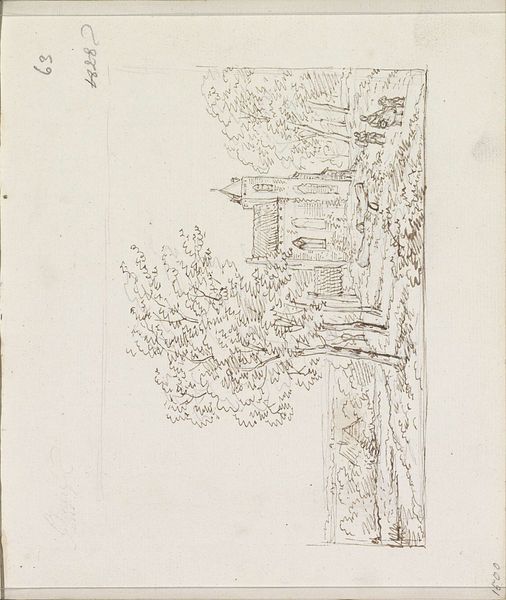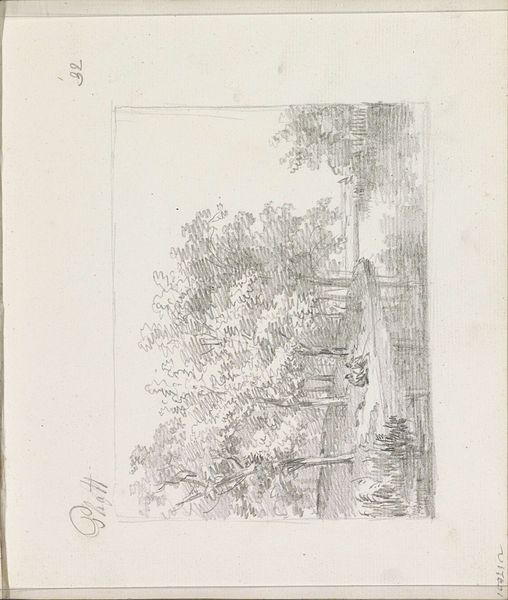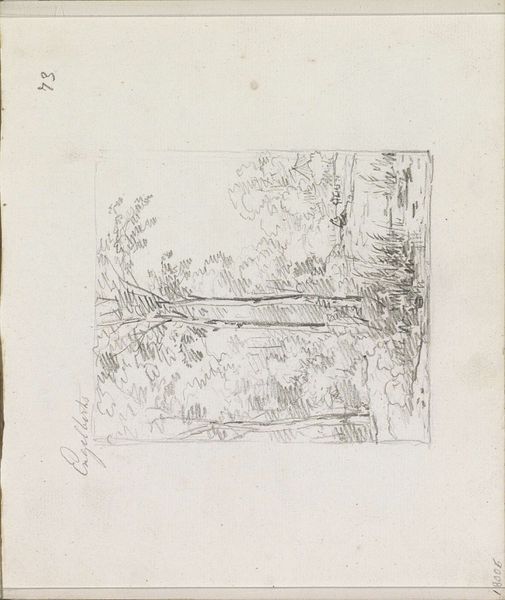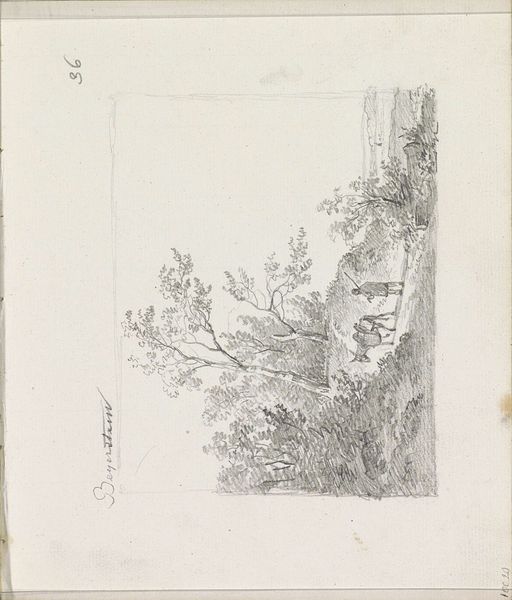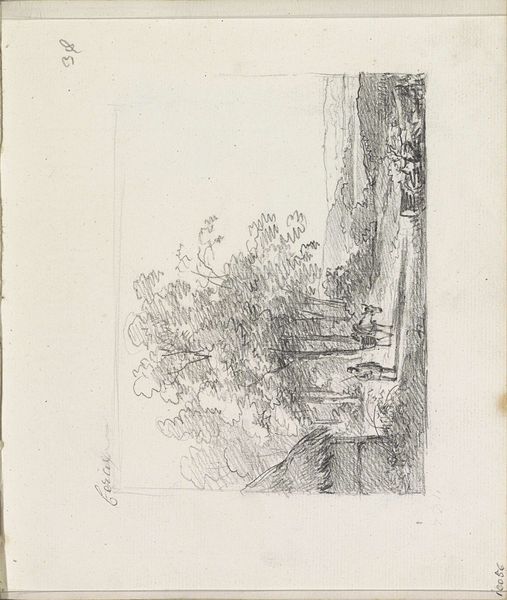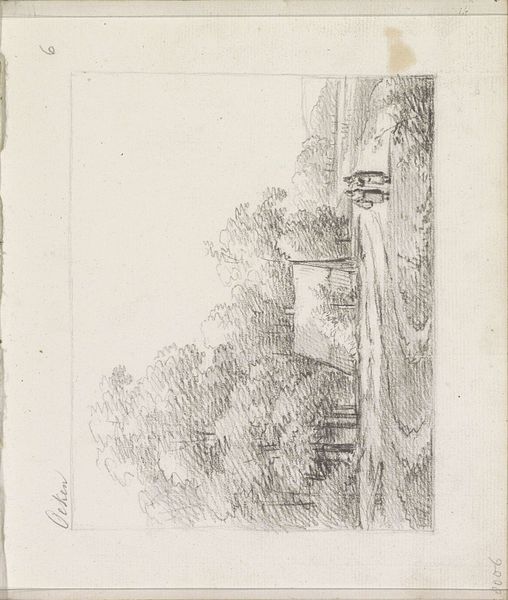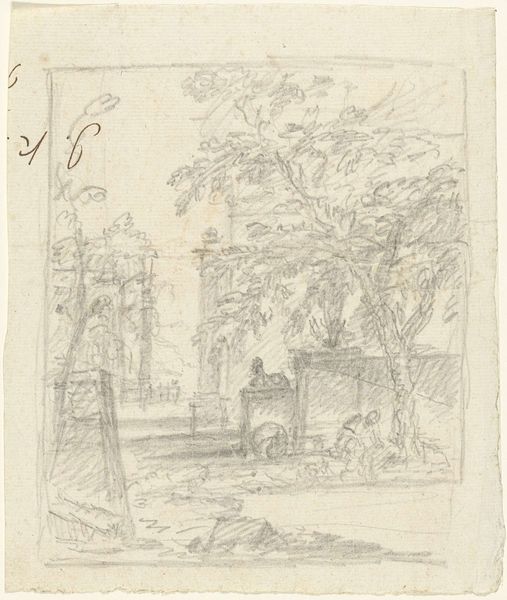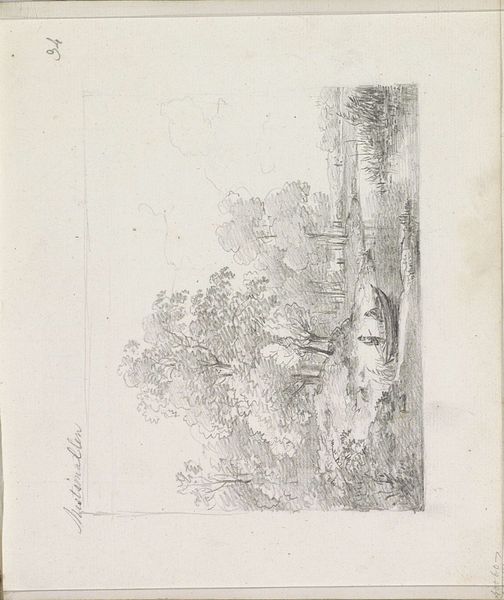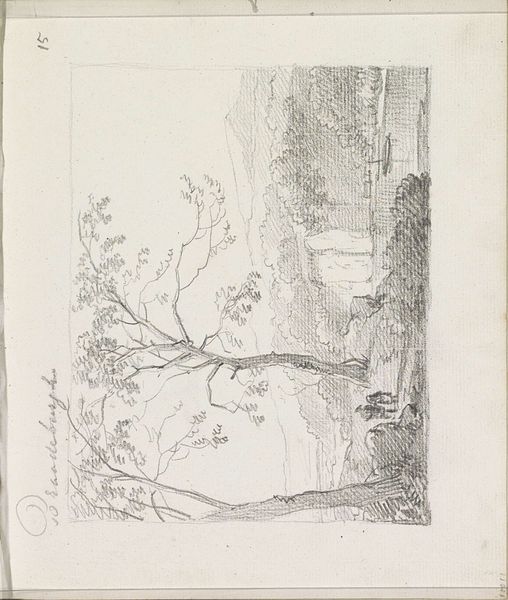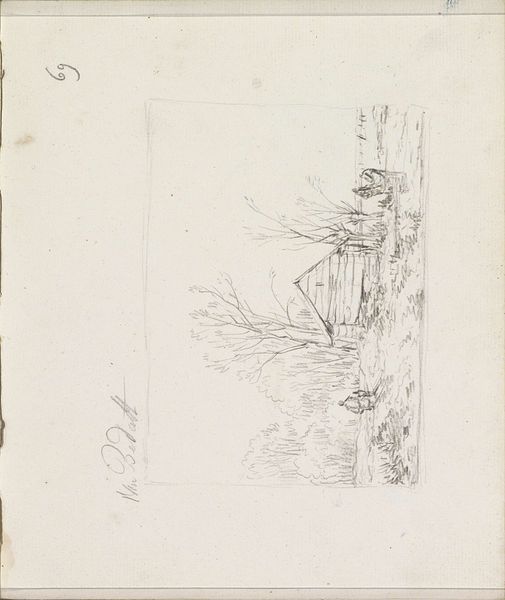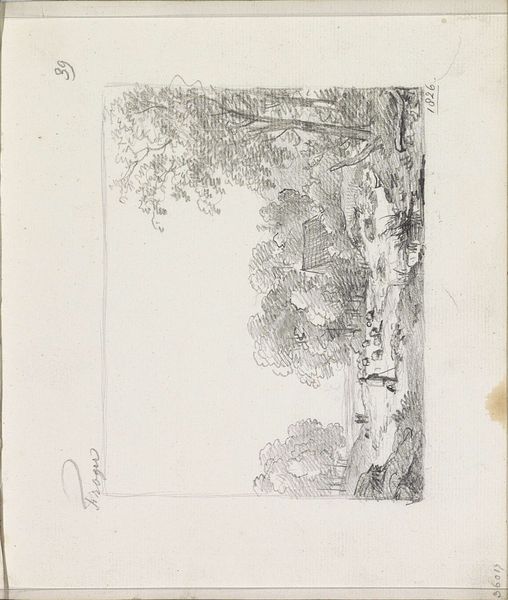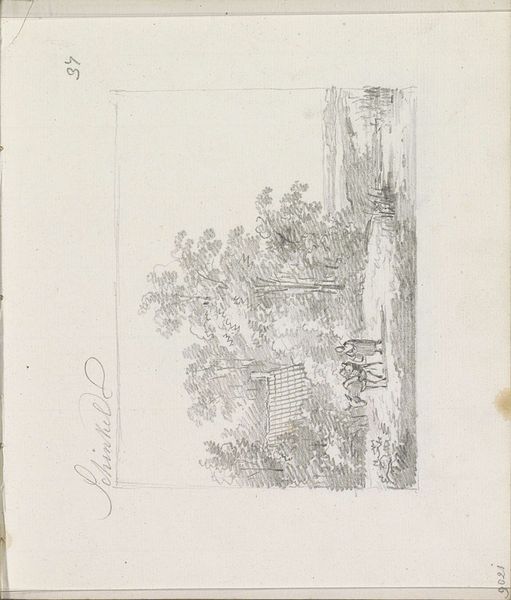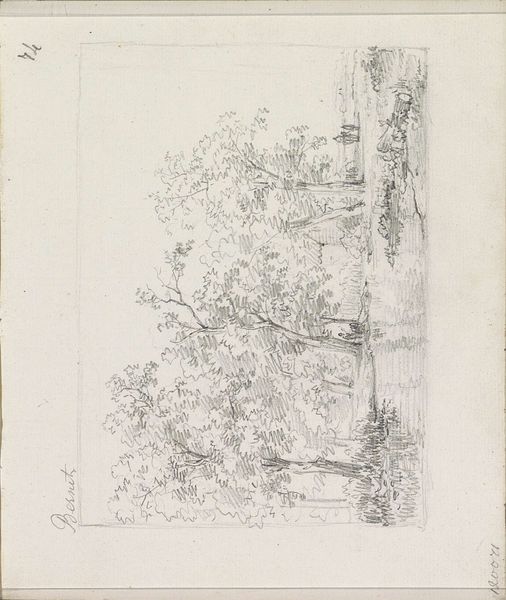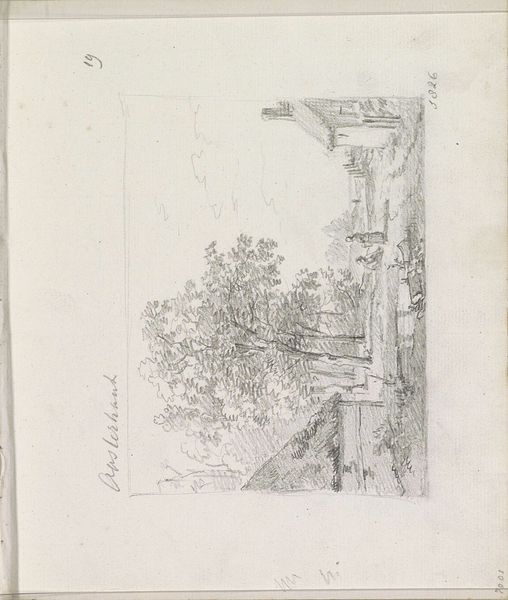
drawing, pencil
#
drawing
#
landscape
#
romanticism
#
pencil
#
realism
Copyright: Rijks Museum: Open Domain
Curator: This is "Two Figures by the Waterside near a Stone Gate," a pencil drawing created between 1825 and 1828 by Andreas Schelfhout, currently residing in the Rijksmuseum collection. Editor: There’s a wistful quality to this sketch, almost dreamlike in its muted tones. The reflections in the water seem to soften the architectural forms, adding a sense of transience. Curator: Schelfhout, situated within the landscape tradition, provides us with a serene moment of daily life viewed through the lens of Romanticism. We see two figures seemingly at ease alongside what could be a modest gate, framed by lush overgrowth near the water’s edge. The setting raises questions around leisure, access to nature, and perhaps a subtle commentary on social relations. Editor: The stone gate resonates symbolically. Gates often act as liminal spaces, transitions between the known and unknown. Paired with the figures’ contemplative stances by the water – itself an enduring symbol of the subconscious – could hint at a deeper introspection. Curator: Interesting! Perhaps the artist wanted to represent their relationship with society at that time through that transition. This relates closely with Schelfhout’s other similar works as an appeal to simpler, more equitable living, one closer to nature, echoing sentiments prominent in post-Enlightenment social philosophy. Editor: The technique feels significant. The looseness of the pencil lines gives it immediacy, like a fleeting impression caught in charcoal. Schelfhout isn’t just depicting a landscape; he is capturing a particular atmosphere. And despite the clear delineation of form, the composition has a sense of longing, for a simpler life perhaps. Curator: I hadn't considered that, I was viewing the gate from more a post-enlightenment point of view and not as a general desire. Thinking on this more deeply, I see the value in exploring our place and belonging, even with what appears at first sight as simple Romantic landscapes. Editor: Indeed. An exploration, that remains quite universal across cultures, beliefs, and social situations. And those moments by the water… they capture something eternal, something deeply human.
Comments
No comments
Be the first to comment and join the conversation on the ultimate creative platform.
